These darling rainbow cupcakes are a feast for your eyes! Students explore the element of art for color theory while designing a treat sweet enough to eat! This project covers Common Core Standards for Science for grade 3 which can be found at the end of the lesson.
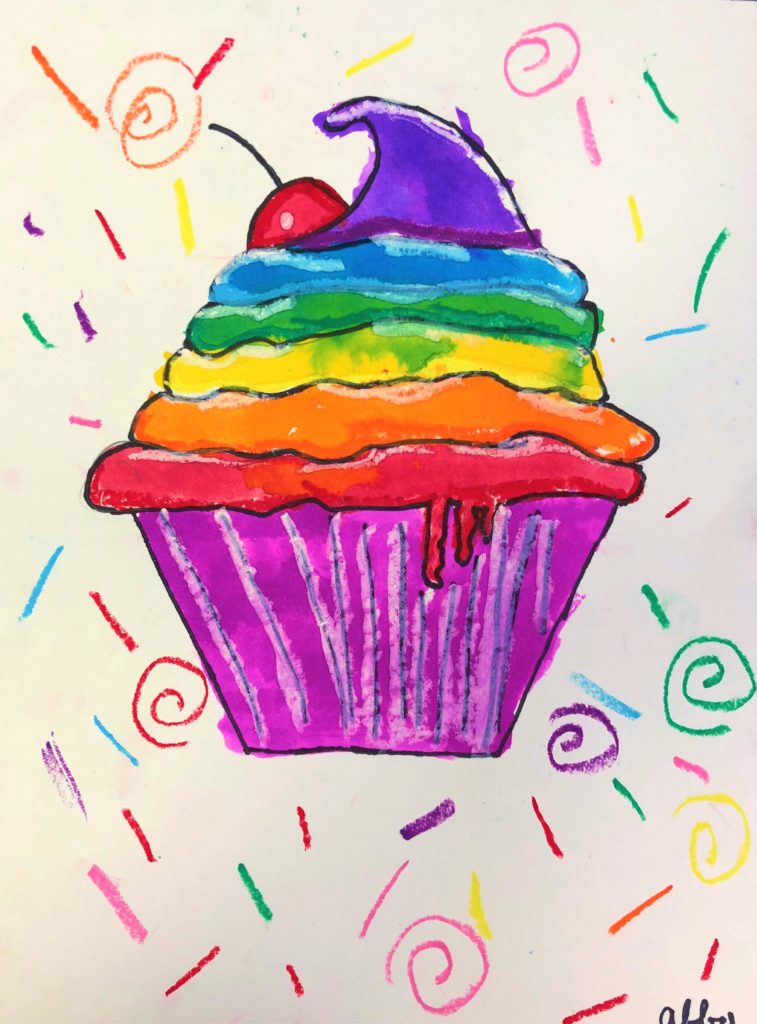
Grade Level
2nd, 3rd, 4th, 5th – The examples in this lesson are by 3rd graders
Objective
In this Rainbow Cupcakes Art lesson, students will create a cupcake using the elements of color and shape.
Time
3 – 60 min lessons
Materials
- Pencils
- Oil pastels – Pentel Arts Oil Pastels, 50 Color Set (PHN-50)
- Black Sharpie Marker – SHARPIE Permanent Markers, Fine Point, Black, 2 Ct
- 9×12 Watercolor paper – Canson (100510941) XL Series Watercolor Pad, 9″ x 12″, Fold-Over Cover, 30 Sheets
- Brushes – Acrylic Paint Brush Set, 1 Packs / 10 pcs Nylon Hair Brushes for All Purpose Oil Watercolor Painting Artist Professional Kits
- Liquid Water Colors – Sargent Art 22-6010 10-Count 8-Ounce Watercolor Magic Set
- Or this mini version for homeschooling – Sargent Art 22-6210 10-Count 4-Ounce Watercolor Magic
- Kleenex for blotting paint
- White copy paper for practice
Inspiration/Artist
I was inspired to make this project from this site: Click Here
Instruction with Questions
Day 1
Begin by reading this fun book: The Day the Crayons Quit, by Drew Daywalt
Next show a couple of videos. I like all of these, but depending on what background they have about color theory, you may only need a couple of them. After watching them, have a discussion reviewing what they learned.
Youtube: The Colors Song | The Colours Song | Scratch Garden: Click Here
Beginning Graphic Design: Color: Click Here
Elements of Art: Color | KQED Arts: Click Here
Brain Games – Visible Spectrum: Click Here
Use this Color Theory for kids inspired by Disney PowerPoint Presentation: Click Here
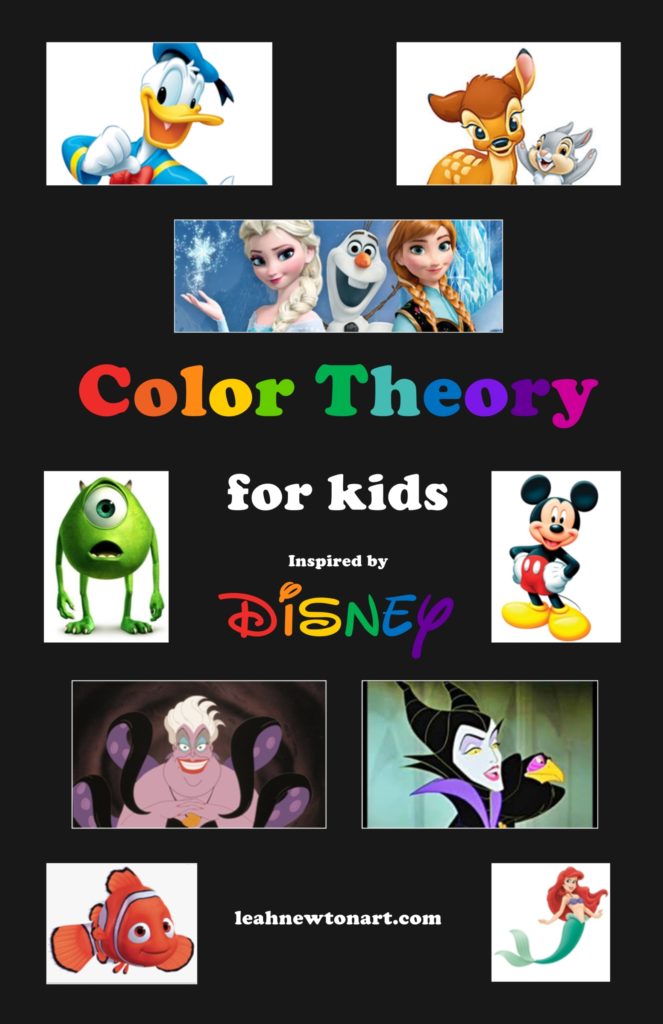
Another idea is to use this color wheel and have them color in the areas with the appropriate color. Click Here for the PDF
Here is what it looks like when it is completed.
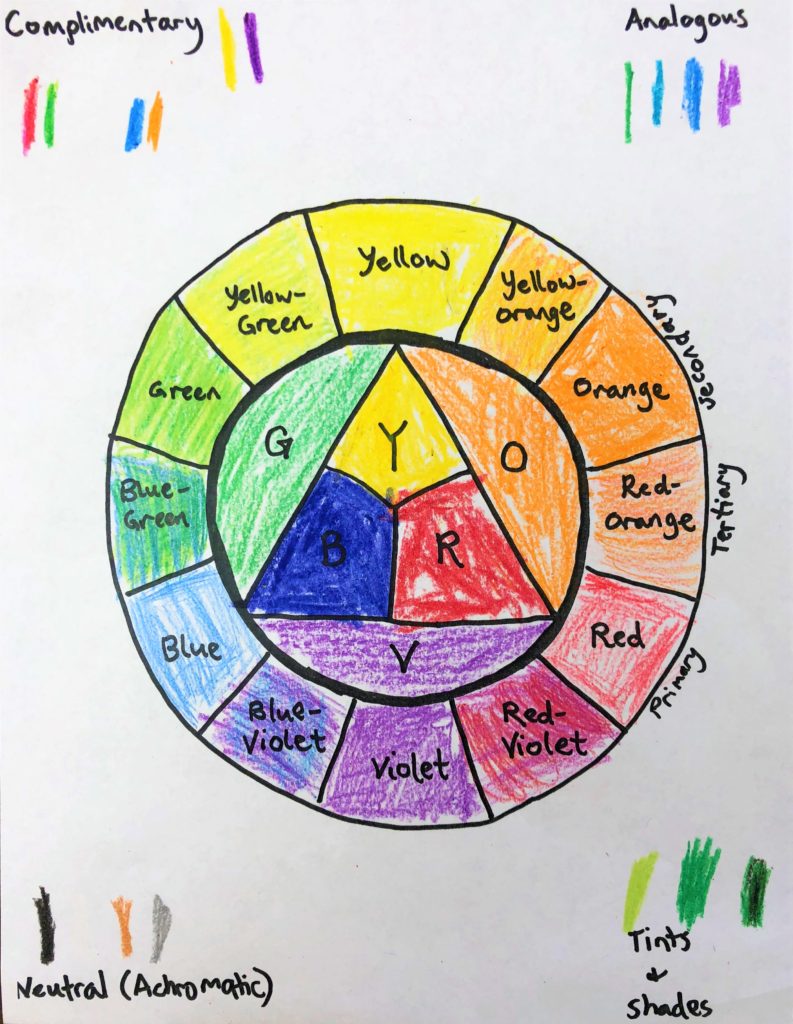
Day 2
It is time to start practicing those cupcakes! I show the students step by step how to build their wrapper and frosting. They make at least two practice drawings on this day. We examine the:
- shape of the wrapper (trapezoid)
- drips from the frosting (not too small!)
- overall triangular-ish shape of the frosting
- curved/puffy edges of the frosting – we called them caterpillars or “worm-ies.” This helped them remember the shape.
- number of layers of regular frosting before hook on top
- hook on top
- cherry – not sitting on top but in top
- lines in wrapper
Once they finish practicing on scratch or copy paper, they can color their cupcake for fun.
Day 3
One more practice is recommended to get that hand eye-coordination in check and remember the steps and rules. Students use a 9×12 sheet of watercolor paper and pencil. Once I see their finished drawing, have them trace over their lines with a Sharpie marker.
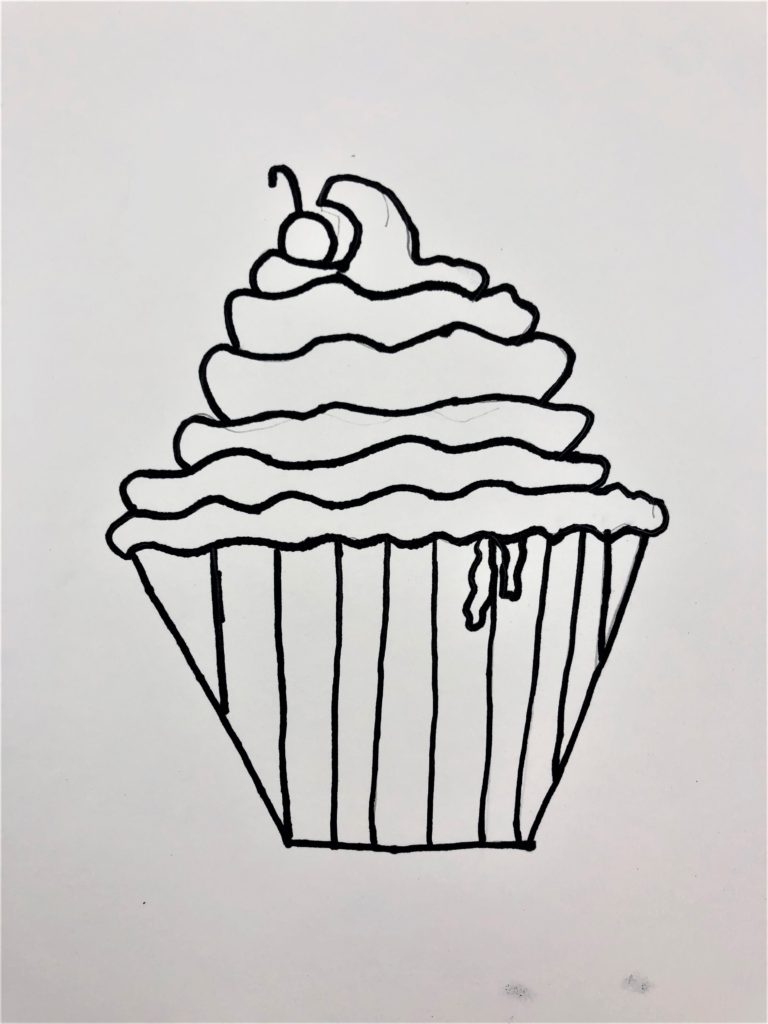
Next pass out rainbow oil pastels, as well as white. The colored oil pastel sits on the bottom line of each area of frosting. The white covers the top. This gives the cupcake frosting a nice shine. I do an example to show them how the white will not show until the watercolor arrives. We do each color layer together. It is a great idea to have them line up their oil pastels in order, bottom to top so they don’t miss a beat. White can also line the bottom edges of the black Sharpie in the wrapper. Don’t forget about the cherry on top! We even added a little bit of white oil pastel to look like it was a shiny cherry on some of the drawings.
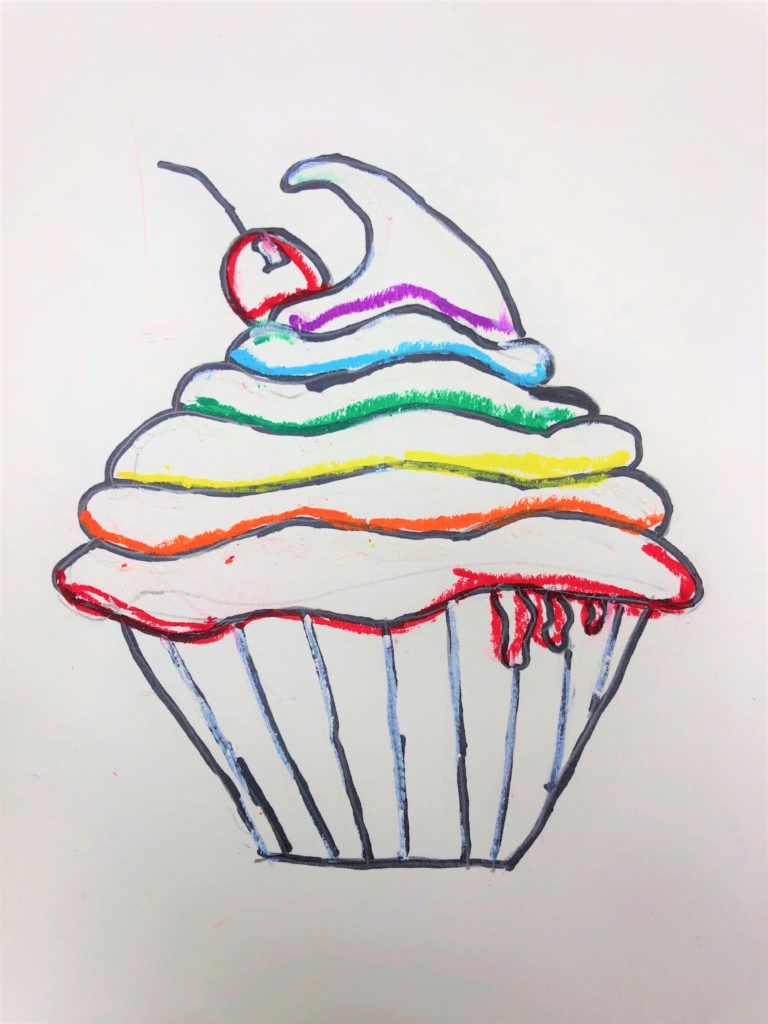
Finally, line one side of your classroom with watercolor paints. Have the students create an assembly line to paint in their areas. Remind them to paint their cherry and have a separate area at the end for the wrapper since it is a larger area and takes a bit longer to finish. I gave them the choice of a different shade of blue or pink. I think the pink really makes the rainbow work best but I also love giving choices.
Check out these finished Rainbow Cupcakes Art pieces!
Common Core Standards
3rd Grade – Science – Physical Sciences
1. Energy and matter have multiple forms and can be changed from one form to another.
e. Students know matter has three forms: solid, liquid, and gas.
f. Students know evaporation and melting are changes that occur when the objects are heated.
g. Students know that when two or more substances are combined, a new substance may be formed with properties that are different from those of the original materials.
2. Light has a source and travels in a direction.
a. Students know sunlight can be blocked to create shadows.
b. Students know light is reflected from mirrors and other surfaces.
c. Students know the color of light striking an object affects the way the object is seen.

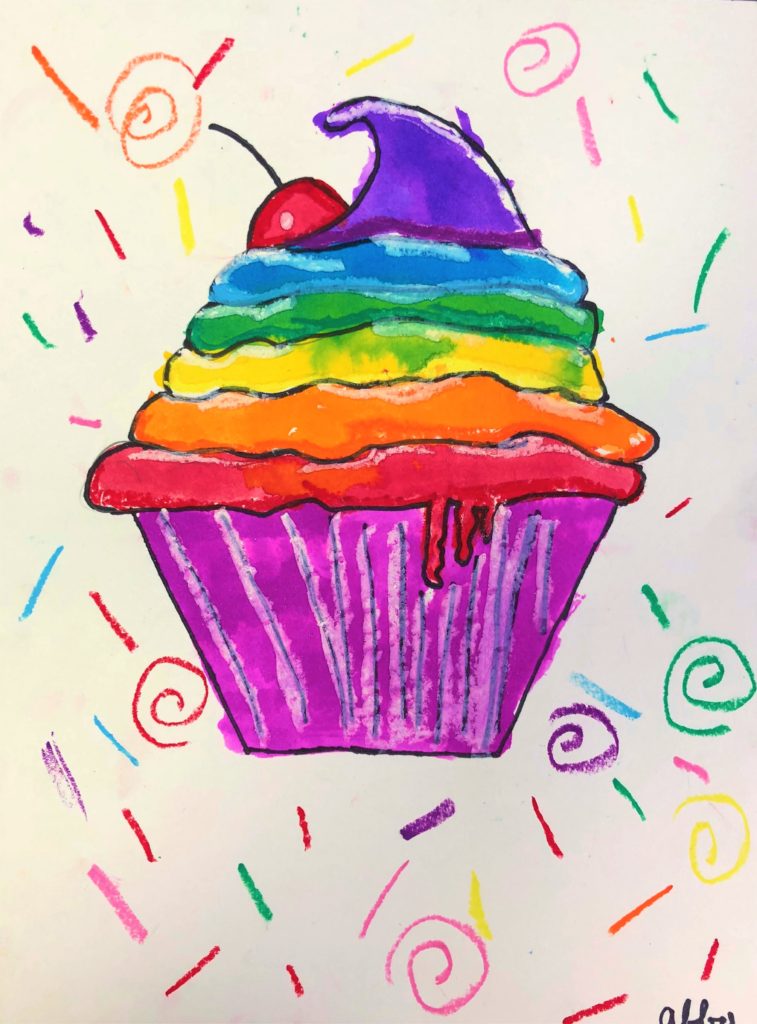
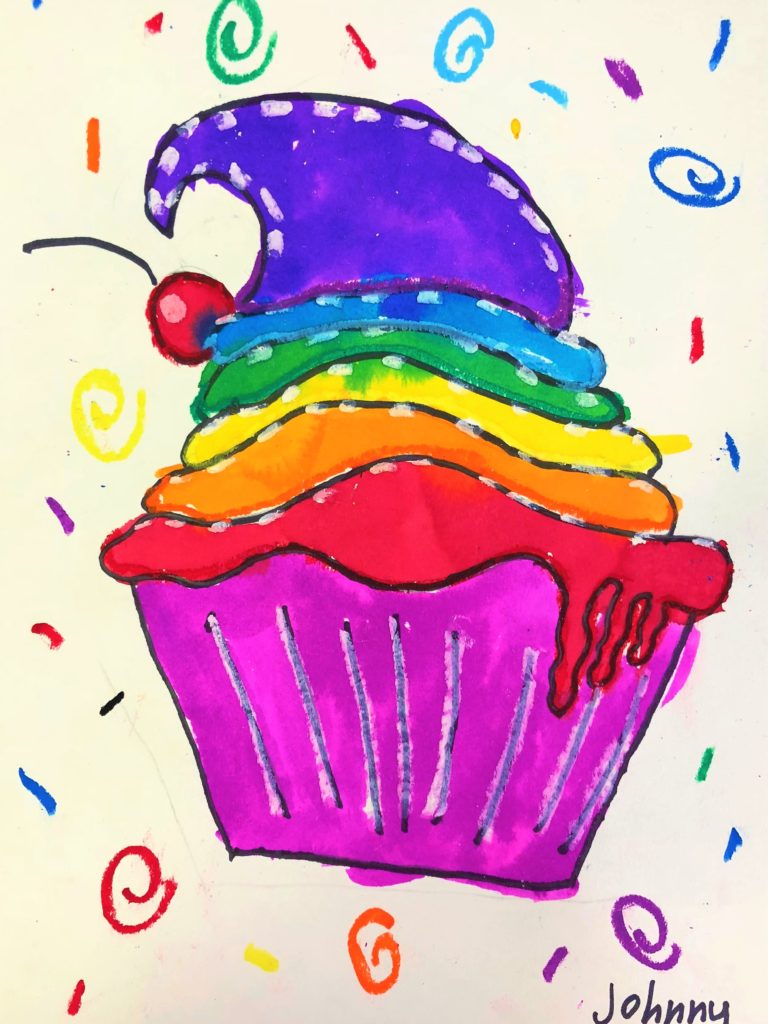
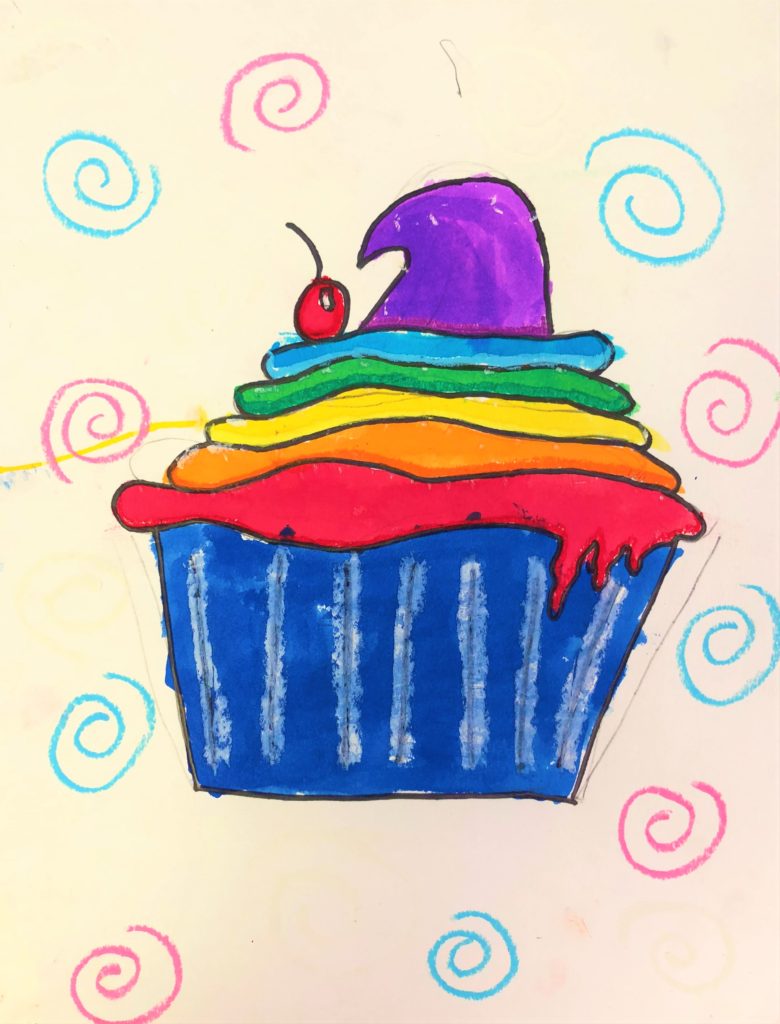
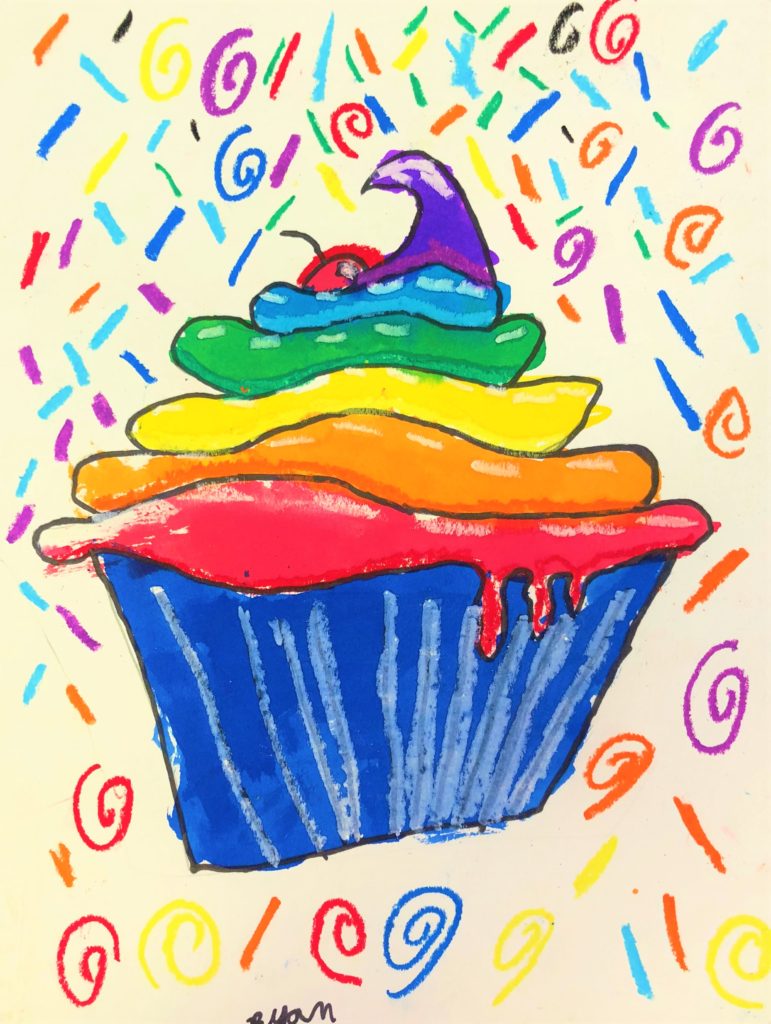
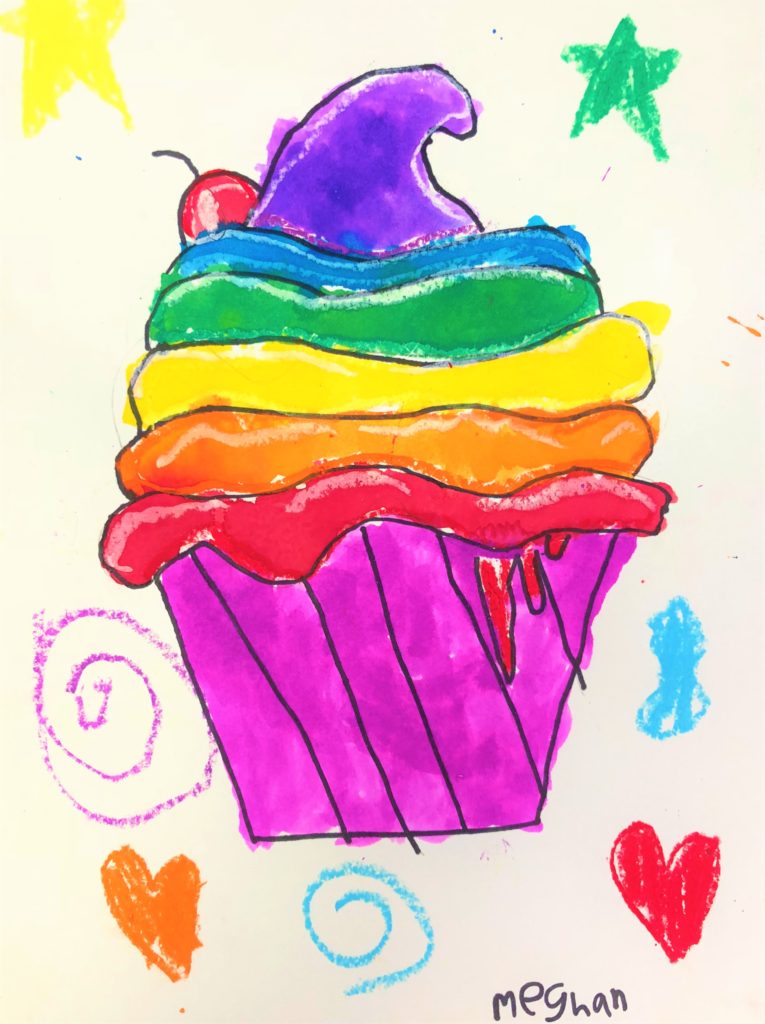
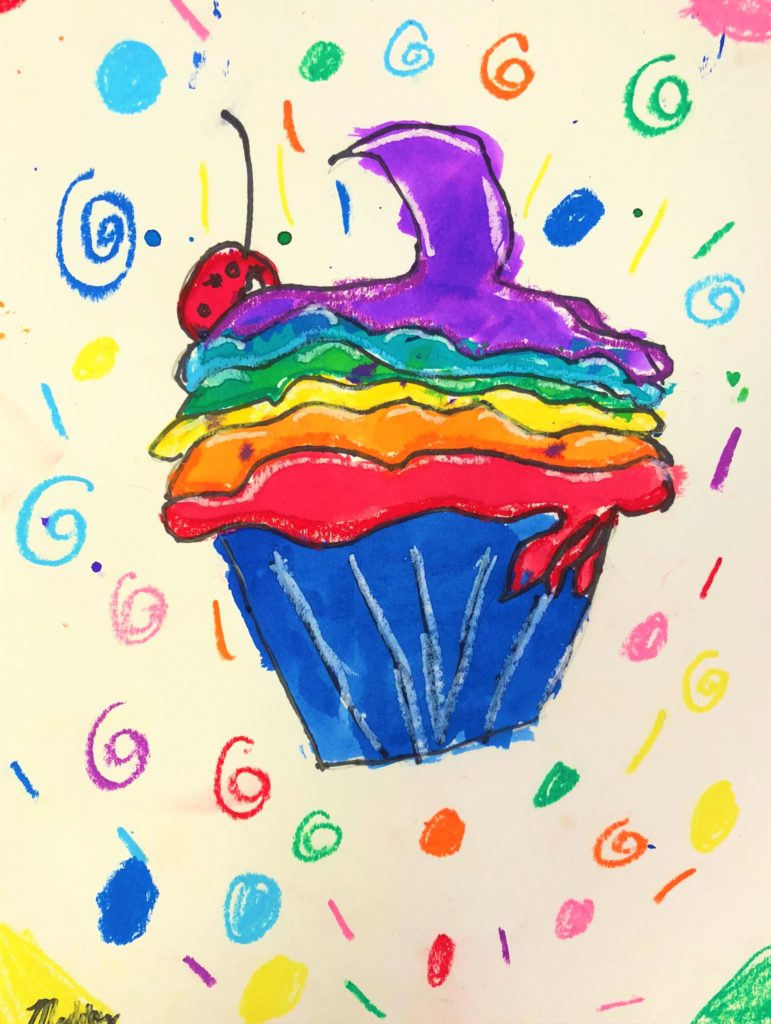
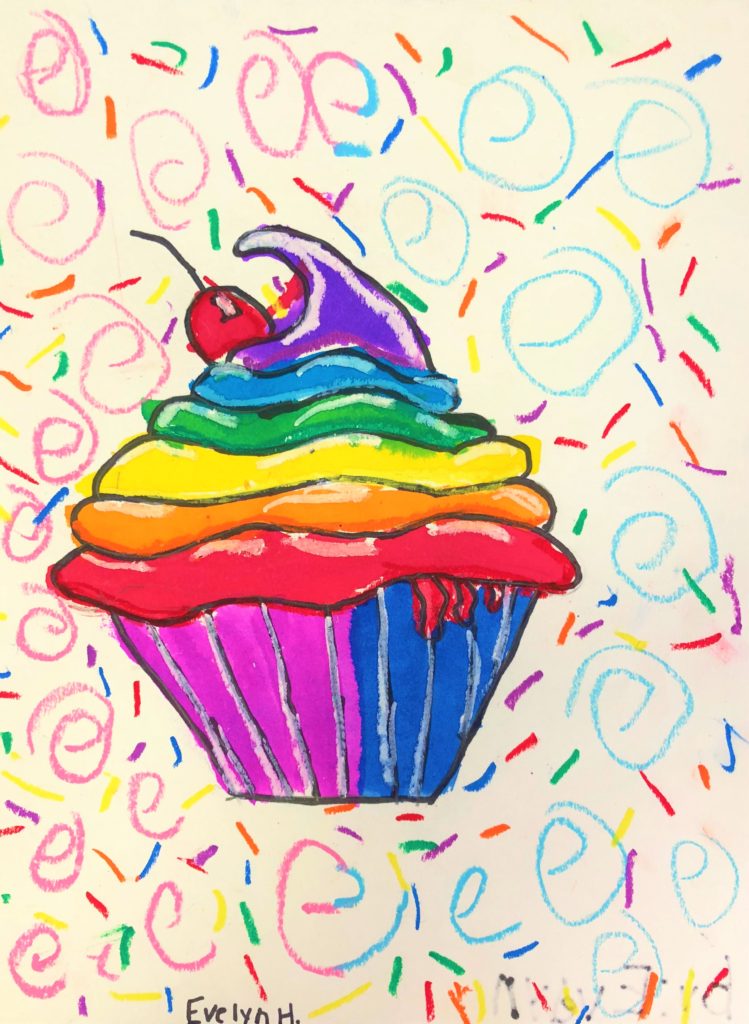
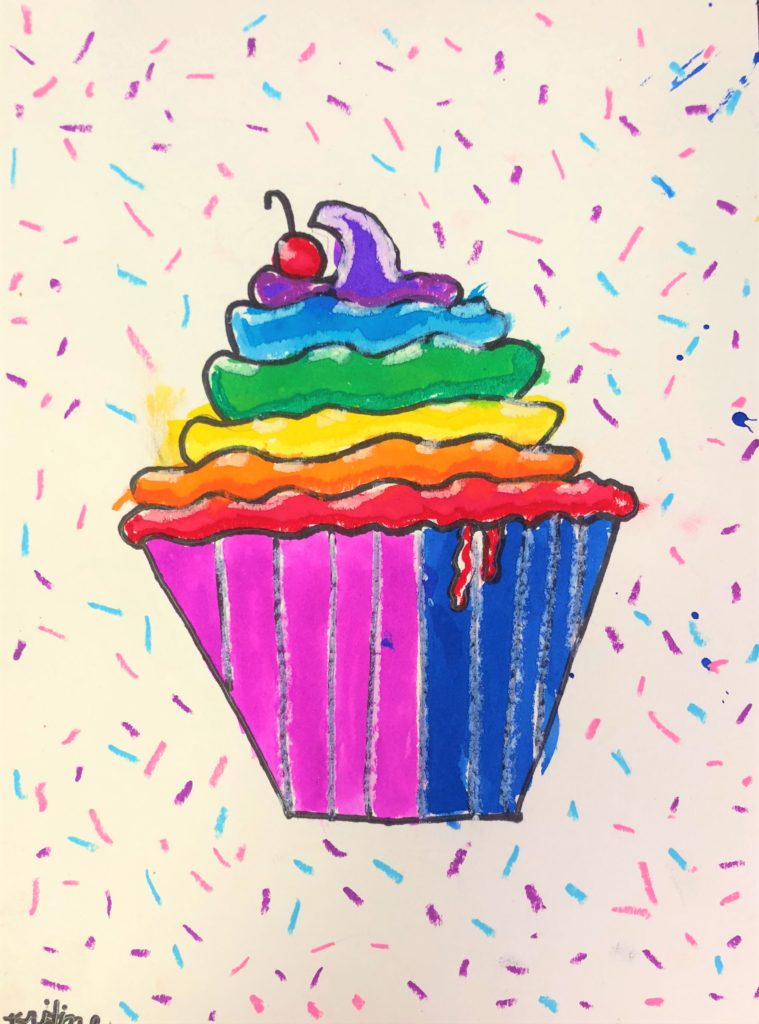
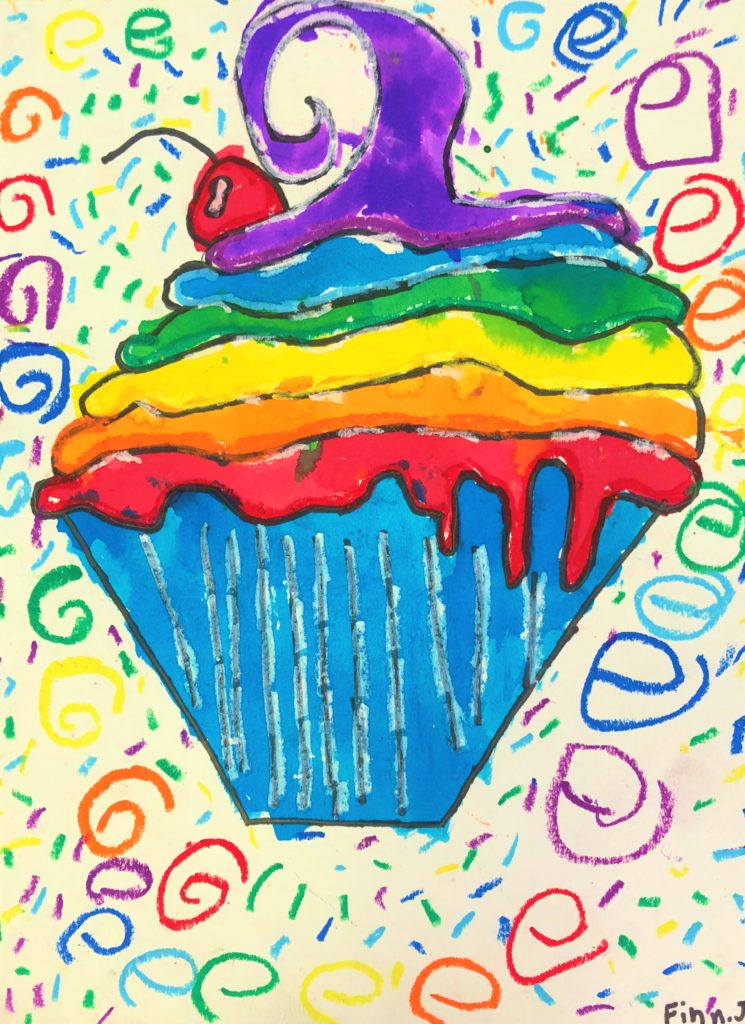
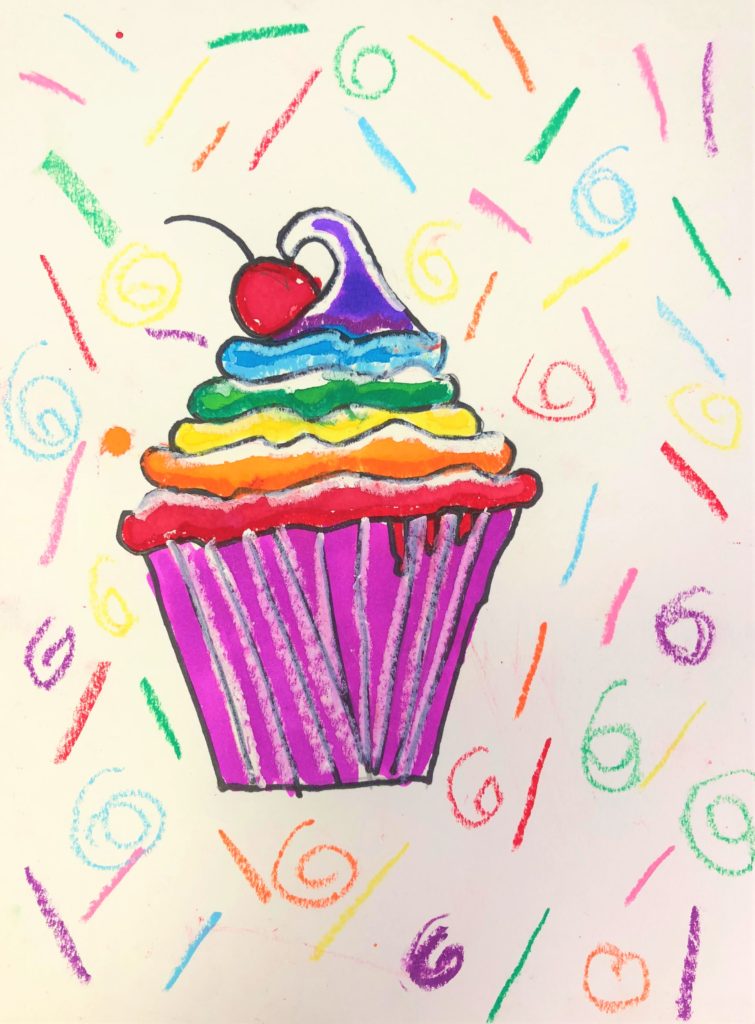
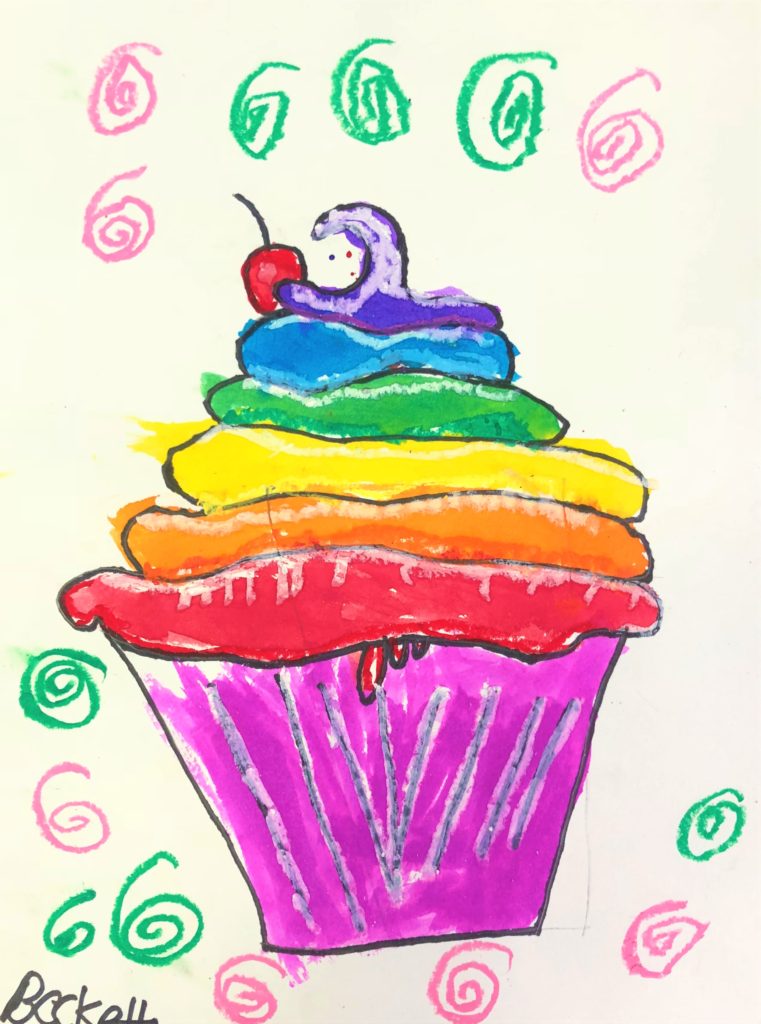
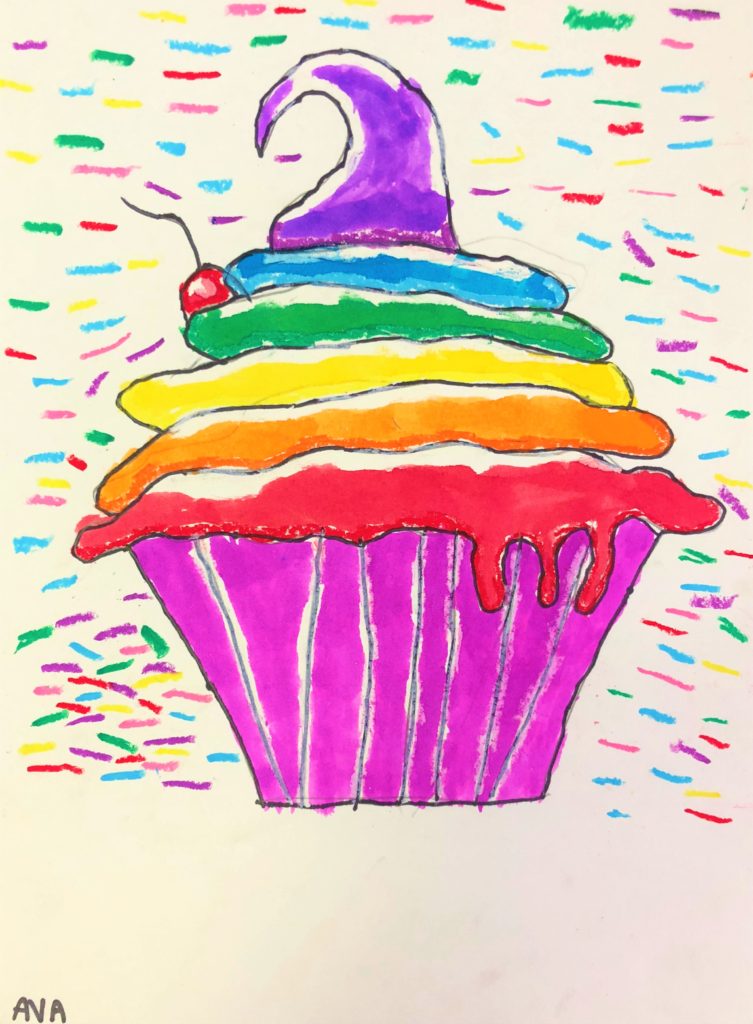

Leave a Reply